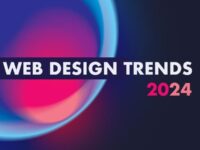The Role of Dark Mode in Modern Web Design

Dark mode has become a prominent design trend in recent years, revolutionizing the way websites and applications are presented to users. In this article, we will explore the significant role of dark mode in modern web design, its benefits, implementation, and its impact on user experience.
Understanding Dark Mode:
Dark mode, also known as night mode or dark theme, is a user interface design option that presents content on a dark background with light-colored text and elements. It is the opposite of the traditional light mode, which displays dark text on a light background.
The Benefits of Dark Mode:
- Reduced Eye Strain: Dark mode reduces the strain on users’ eyes, especially in low-light conditions. It minimizes the contrast between the screen’s brightness and the surrounding environment.
- Energy Efficiency: On devices with OLED or AMOLED screens, dark mode can save battery life as individual pixels emit light, and darker pixels consume less energy.
- Improved Readability: Dark mode can enhance readability, particularly for users with light sensitivity, by providing a high-contrast, crisp text against the dark background.
Aesthetically Pleasing: Many users find dark mode aesthetically pleasing and stylish, making it a desirable option for modern design.
Implementing Dark Mode:
To incorporate dark mode into your web design effectively, follow these steps:
- User Preference Detection: Provide users with the option to choose between light and dark modes. Detect their preference and remember it for future visits.
- Theming and Styling: Create a separate dark mode style sheet that defines the colors, typography, and other styling elements for the dark mode interface.
- Toggle Switch: Include a toggle switch or button that allows users to switch between light and dark modes easily.
- Accessibility Considerations: Ensure that text remains highly readable and that there is sufficient contrast between text and background colors in both modes. Follow web accessibility guidelines.
Impact on User Experience:
- Enhanced Comfort: Dark mode’s reduced brightness contributes to a more comfortable and less glaring browsing experience, especially in low-light environments.
- Extended Engagement: Users are more likely to spend longer periods on websites with dark mode options, as it caters to their preferences and comfort.
- Improved Focus: Dark mode can direct users’ focus to the content itself, minimizing distractions from the surrounding interface.
- Stylish Branding: Dark mode can serve as a unique and stylish branding element, distinguishing your website from competitors.
Conclusion:
Dark mode has evolved from being a trend to becoming an essential feature in modern web design. By offering users a choice between light and dark modes, web designers can enhance user experience, reduce eye strain, and create a visually appealing and engaging online environment. As you embrace this design trend, remember to prioritize accessibility and user preferences to provide the best possible experience for your audience.







